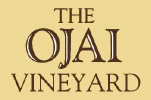

FALL 2009
I remember so clearly a moment 28 years ago when a fellow winemaker expressed his ecstatic enthusiasm for the start of harvest. The new harvest was a chance to start fresh and if he was artful or lucky he might make the best wine of his career. His comment really struck a chord, and to this day I get excited about every harvest. Part of the thrill is the urgency involved in making quick sound decisions. In my view, in order to make the best possible wine, a winemaker has a window of two or three days to get the fruit picked from a particular vineyard. Too soon and the wine is insipid, too late and one forfeits the nuance and perfume the vineyard has to offer.
This harvest started off at a ferocious pace. After the coolest summer I can remember in Ojai, I expected ripening to be delayed. But instead a mild heat-spell that began at the end of the last week of August propelled all the grapes we buy in Ojai as well as the sauvignon blanc and pinot noir purchased in northern Santa Barbara County to ripen quickly. By the end of the first week of September we had brought in 60% of our grapes for the year, about 2 weeks ahead of our usual schedule.
Imagine my bewilderment when I was back up in the vineyards checking out the chardonnay, which always ripens later, to see another winemaker's pinot noir grapes still hanging on the vine three weeks after I had harvested mine! I was so curious that I had to pick a few berries and taste this super ripe fruit. Regrettably these pinot grapes were flat tasting, since there was no natural acidity left. The grapes were mellow and sweet, tasted like raisins and plums-but they lacked freshness or spiciness.
The best time to pick a vineyard remains a quandary in rain-free Southern California. No compelling environmental worries, like impending winter storms force the hand of the winemaker. It is much more subtle-what aroma, flavor, and texture-profile does one prefer? A few years ago, the most popular style for chardonnay was a wine of super ripeness, extreme alcohol, over-the-top oakiness, and flabby acidity. Maximum impact was the goal, finesse and balance were eschewed. While the market for these clunky wines is still thriving, consumer interest in chardonnays with zip and minerality, wine that makes your mouth water for another sip, is growing apace. I see a similar future for red wine in this country, following the evolution we have seen with chardonnay.
Adam Tolmach

